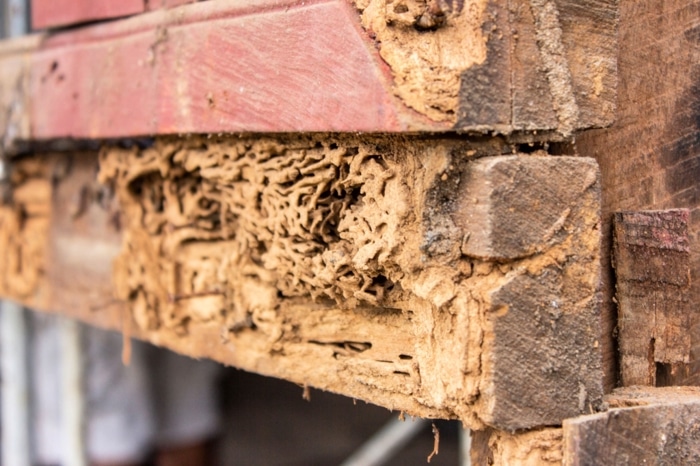Discovering pests within one’s living space can significantly tarnish a tenant’s perception of their home and the property management’s effectiveness. This initial frustration is a common pain point that resonates deeply with residents, potentially leading to negative reviews and lower resident scores. As the real estate industry increasingly relies on these scores to gauge tenant satisfaction and property appeal, understanding the direct link between proactive pest control and enhanced tenant ratings becomes paramount. This guide delves into the crucial role that effective pest management plays in not only addressing this pressing issue but also in significantly improving resident scores.
What is the Resident Score?
Resident score serves as a pivotal metric, encapsulating a tenant’s reliability and satisfaction within a property. Unlike traditional credit scores that assess financial reliability, resident scores offer a broader view, encompassing the tenant’s overall experience, adherence to community rules, and feedback on property management services. This score is becoming an invaluable tool for property managers and potential tenants alike, influencing leasing decisions and reflecting the property’s commitment to maintaining high standards of living.
The relevance of resident scores extends beyond mere numbers; it encapsulates the essence of tenant experiences and the effectiveness of property management strategies. Properties that consistently achieve high resident scores are often those that prioritise tenant satisfaction, address concerns promptly, and maintain high-quality living conditions. Proactive pest control emerges as a critical component in this equation, directly impacting the factors that contribute to resident scores and, by extension, the property’s reputation and appeal in the market.

No More Resident Complaints.
Resident Score vs Credit Score
Drawing a distinction between resident and credit scores illuminates the unique aspects of each and their significance in the tenant screening process. While credit scores focus on a tenant’s financial responsibility, indicating their likelihood to fulfil lease obligations, resident scores paint a broader picture. They reflect a tenant’s overall behaviour, including how they maintain their living space, interact with neighbours, and comply with property policies.
This differentiation highlights the multifaceted nature of tenant evaluation, where both scores play complementary roles. A high resident score, bolstered by proactive pest control measures, signals to property managers and future tenants that the living environment is not only financially stable but also physically well-maintained and conducive to a high quality of life. It reassures stakeholders of the property’s commitment to excellence, elevating its standing in the competitive real estate market.
Resident Credit Score
The concept of a resident credit score merges financial responsibility with tenant reliability, offering a nuanced view of a tenant’s overall profile. It factors in the financial aspects of tenant behaviour, such as timely rent payments, alongside other non-financial behaviours, including adherence to community guidelines and feedback on property maintenance and services. The inclusion of pest control effectiveness as a criterion in evaluating resident credit scores underscores the importance of maintaining a pest-free environment in achieving favourable tenant reviews and ratings.
Properties that excel in pest management not only mitigate the financial repercussions associated with pest infestations, such as property damage and costly exterminations but also enhance their appeal to prospective tenants. A robust pest control strategy can significantly influence a tenant’s decision to renew their lease, reflecting positively on their resident credit score. This proactive approach to property management, emphasising preventive measures and timely responses to pest concerns, solidifies the property’s reputation for excellence and reliability, making it a desirable choice for current and prospective residents alike.
How to Check Your Resident Score
For tenants, understanding your resident score is crucial in navigating the rental market successfully. This score can be accessed through services provided by property management or platforms specialising in tenant screening. Typically, tenants can request their score directly from their property manager or through an online tenant portal. These platforms may require basic information from the tenant to retrieve the score, ensuring that the process is secure and private.
Property managers can facilitate this process by providing clear instructions and support for tenants looking to access their scores. Transparency about how scores are calculated and what factors influence them can also help tenants take proactive steps to maintain or improve their ratings, such as timely rent payments and adherence to community guidelines.
What’s a Good Resident Score?

A good resident score varies depending on the scoring system used by property management or screening services. However, a score that falls within the upper quartile of the scale typically indicates a reliable and responsible tenant. For property managers, sharing benchmarks or examples of what constitutes a good score within their specific context can guide tenants on how to achieve or maintain such standings.
Encouraging tenants to engage in behaviours that positively impact their scores, such as maintaining a clean and pest-free living environment, promptly reporting maintenance issues, and respecting property rules, can lead to improvements in these ratings. Proactive pest control measures play a significant role in this regard, as they contribute to the overall upkeep and satisfaction associated with the living conditions.
Proactive Pest Control: A Key to Enhanced Resident Scores
Proactive pest control directly contributes to tenant satisfaction, influencing positive resident scores. A consistent and comprehensive pest management strategy ensures that tenants enjoy a comfortable, safe, and healthy living environment, free from the nuisances and hazards associated with pests. This strategy involves regular inspections, timely interventions, and tenant education on preventing pest infestations.
By implementing such measures, property managers demonstrate a commitment to the well-being of their tenants, which is reflected in tenant ratings and feedback. Satisfied tenants are more likely to report positive experiences and high resident scores, which can boost the property’s reputation and attractiveness to prospective renters.
Implementing Pest Control Measures to Boost Tenant Ratings
Property managers aiming to enhance tenant ratings through pest control can start by conducting a thorough assessment of the property to identify vulnerabilities and existing issues. Developing a tailored pest management plan that addresses these findings and involves regular preventative treatments can prevent infestations before they start.
Communication with tenants about pest control efforts and how they can contribute to a pest-free environment is also crucial. Educating tenants on simple prevention techniques, providing resources for reporting pest sightings, and responding swiftly to such reports can foster a collaborative approach to pest management. Engaging professional pest control services that offer eco-friendly and effective solutions can further demonstrate the property’s commitment to quality and safety, positively impacting tenant ratings.
By prioritising proactive pest control measures, property managers not only safeguard the physical integrity of their properties but also enhance the living experience for tenants. This concerted effort can lead to improved resident scores, reflecting the high level of satisfaction and trust between tenants and management.
Monitoring and Adjusting Pest Control Strategies
Continuous evaluation and adjustment of pest control strategies are essential for maintaining and improving resident scores. Property managers should establish a feedback loop that includes regular tenant surveys, pest control service reviews, and analysis of pest incidence reports. This feedback enables property managers to gauge the effectiveness of their pest control measures and identify areas for improvement.
Adjustments may involve changing pest control service providers, introducing new pest prevention technologies, or modifying treatment schedules to address emerging challenges. Engaging tenants in this process by soliciting their input and educating them on any changes can help maintain transparency and trust.
Conclusion
Proactive pest control is a cornerstone of maintaining a high-quality living environment, directly influencing tenant satisfaction and resident scores. By prioritising effective pest management, property managers can ensure their properties stand out in a competitive rental market, attracting and retaining satisfied tenants.
A pest-free environment is not just a benefit; it’s a necessity for high tenant ratings. Don’t let pests tarnish your property’s reputation. Take action today to enhance your pest control measures and watch as your resident scores soar. Reach out to a professional pest control service and invest in the satisfaction and well-being of your tenants. Your property—and your tenant ratings—will thank you.





